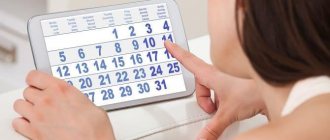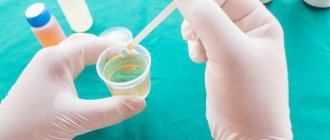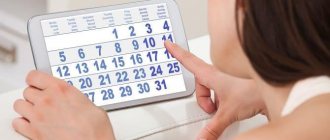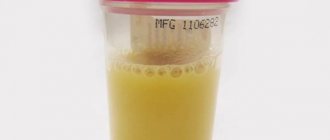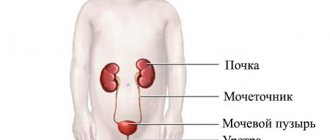Several branches of the Health Clinic allow you to get tested, close to your home or on your way to work or school. Record at any time convenient for you, results the next day, accurate transcription by a specialist - and all this at an affordable price!
Like other glass samples, this type of analysis is designed to clarify the location of urinary pathology. A three-glass urine sample is indicated in cases where the doctor suspects that the patient suffers from urethritis or prostatitis, and also after it is not possible to determine the source of the pathology identified as a result of a general urine test.
Urinalysis, three-glass sample: preparation for the study
Before this test, it is recommended to refrain from urinating for 3-5 hours. Therefore, urine collected in the morning is ideal. After you finish toileting the genitals (warm water, without using any soap), you need to collect urine in a clean, preferably sterile container in the usual way, but at the same time dividing the entire volume into 3 unequal portions. Before taking the latter, if the reason for urine analysis is possible prostatitis, which needs to be diagnosed, you should massage the prostate.
How to do it right
Many girls are also interested in how to collect urine with stitches on the vagina. Immediately before collecting material, wash with antibacterial soap. Using a shower will minimize the entry of lochia particles into the collection container. Also, after childbirth with stitches and tears, you can put a little cotton wool, a bandage or a cotton pad on the intimate area: this method will allow you to absorb excess.
How to collect urine correctly: doctors recommend collecting the second stream and ignoring the first and third. You just need to wait a few seconds after the start, and then collect the required amount without waiting for the end. This method allows medical professionals to obtain the most accurate information about materials and determine a diagnosis for subsequent treatment.
It is important to understand that ignoring the rules of personal hygiene or failure to observe the correct technique for collecting urine will lead to distortion of the examination results.
Three-glass urine sample: interpretation of results
Both all urine as a whole and each portion of it separately are examined.
If leukocytes are found in the 1st portion, despite the fact that in the remaining 2 portions their content does not exceed the norm, this indicates urethritis. If they are concentrated in the 3rd portion, then the source of inflammation is the prostate and the patient is diagnosed with “prostatitis” with 100% accuracy. If there are deviations in all three, then we can talk about kidney or bladder disease. In this case, you will need to be tested for pyelonephritis and cystitis.
What is it for
Laboratory examinations of urine are necessary in order to exclude the possibility of diseases, inflammatory processes or infections. This method is able to detect most pathologies at an early stage and easily eliminate the problem that has arisen. In order for the results to be reliable and the indicators accurate, it is important to do it correctly. If a woman makes mistakes in collecting the necessary materials, there is a high probability that the results will be false.
Erroneous tests can cause panic and shock in a young mother.
It is important to understand that such research is urgently needed at the moment. If urine collection occurred according to all requirements, but the result is disappointing, this may indicate the presence of infections or pathological changes.
Read also During which contractions you need to go to the maternity hospital and prepare a bag in advance
Symptoms such as:
- pungent and unpleasant odor;
- rich dark color;
- foreign particles in the material (flakes or other discharge).
The mother herself can see such changes after a bowel movement; they indicate disturbances in the functioning of the internal organs. If these symptoms occur, you should tell your doctor about it.
Tests one month after birth
A month after giving birth, women must return to their local obstetrician-gynecologist. The range of tests during this period during the normal course of the postpartum period is quite narrow (provided there are no complications after childbirth, as well as the absence of extragenital pathology). Mandatory studies include a smear from the genital organs for flora.
Many people believe that after childbirth, an HIV test is included in the list of mandatory ones. This opinion is wrong. If a woman is examined twice during pregnancy, there is no point in taking it immediately after childbirth. After consulting the woman, the therapist must prescribe a clinical blood test and a general urine test. If there are any concomitant diseases, the woman needs consultation with related specialists and an individual examination.
Tests after childbirth by a gynecologist
After being discharged from the maternity hospital, new mothers must visit an obstetrician-gynecologist at the antenatal clinic. The main purpose of the appointment is to assess the woman’s condition in the postpartum period, and if there are any symptoms indicating an unfavorable course, prescribe the necessary examinations and therapy.
After a gynecological examination, if there are signs of colpitis (inflammation of the vagina), exocervicitis (inflammation of the vaginal part of the cervix), endometritis (inflammation of the endometrium of the uterus), the doctor can take an analysis of the genitourinary tract for flora. This analysis will determine:
- the flora that inhabits the vagina (normally, most representatives of the flora are Doderlein’s bacilli),
- the number of leukocytes - cells, an increase in the number of which indicates an inflammatory process (the norm is up to 10),
- the amount of epithelium, which in the vagina is represented by stratified squamous non-keratinizing epithelium (in a normal smear its amount should be moderate).
If the doctor suspects the presence of endometritis, then the right decision would be to send the woman for an ultrasound examination of the pelvic organs and a clinical blood test to identify inflammatory changes.
Palpation of the mammary glands is mandatory. Since many mothers encounter the problem of lactostasis, and, sometimes, mastitis. If there is congestion in the mammary glands, milk can be analyzed for the presence of infectious agents.
Irina Drozdova, obstetrician-gynecologist, especially for Mirmam.pro
Problems with urination after childbirth
- No urge to go to the toilet.
After giving birth, a woman may not feel the urge to go to the toilet at all, even when her bladder is already full.
This is due to the fact that the pressure of the uterus on the bladder disappears, the tone of the bladder decreases, it increases in size, swells and begins to accumulate a lot of fluid. Its sensitivity may be reduced due to the use of painkillers during labor, muscle spasms, or fear of pain.
This problem does not require special treatment: gradually the tone of the bladder increases, swelling subsides, and urination returns to normal. At first, you just need to regularly remind yourself that you need to go to the toilet.
- Frequent urge to go to the toilet.
Frequent and copious urination in the first days after childbirth indicates the removal of excess fluid from the body. If you want to go to the toilet often, but the amount of urine is scanty, it is better to consult a doctor, as this may be a sign of the onset of inflammation of the bladder or urethra.
- Pain when urinating.
Most often, burning and pain are explained by urine getting on abrasions that appeared during childbirth and unhealed sutures. To reduce discomfort, you can urinate while standing in the shower, with your legs spread wide apart so that the stream of urine does not touch the external genitalia.
If pain when urinating does not go away after the abrasions and stitches heal (usually on the second or third day) or the bladder itself hurts, this may be a symptom of urethritis or cystitis.
- Urinary incontinence (bladder atony).
After natural childbirth, the pelvic floor muscles stretch and lose elasticity, easing pressure on the bladder and urethra. As a result, the bladder loses its ability to close completely, so a few drops of urine may be released when laughing or coughing. Many women feel embarrassed about this delicate problem, but in fact, it can be dealt with with the help of sanitary pads and Kegel exercises.
How to collect urine after childbirth without blood
Since women who have given birth experience bleeding from the vagina, it is important that the blood does not get into the urine. Otherwise, the test results will show an increased number of leukocytes, which may not be true. How to take a urine test after childbirth with stitches?
Before collecting tests, a woman should wash herself thoroughly with soap. It is best to do this in the shower, since here the likelihood of blood getting into the container is minimized. After washing, you need to place a cotton swab in the vagina, this will prevent the discharge from entering the urine. For the most accurate results of the study, it is necessary to take average urine, that is, for the first 3-4 seconds you need to urinate in the toilet, then in the container, and then again in the toilet.
Requirements
How to donate urine after childbirth? Requirements for urine collection in the postpartum period:
- A young mother needs to carefully monitor her diet. Also, before taking the test, you should refrain from excessive consumption of protein-rich foods. These include meat, fish, chicken, dairy products, eggs and legumes.
- It is necessary to thoroughly clean the external genitalia using fragrance-free soap.
- If a young mother has stitches on the perineum after ruptures, it is necessary to cover this area with a sterile napkin to avoid unwanted inclusions in the urine.
- The entrance to the vagina should be covered with a ball of sterile cotton wool. It is prohibited to insert hygienic tampons into the vagina during the postpartum period.
- Only the morning urine sample is taken for analysis.
- Experts advise collecting not the initial urine, but the middle portion, since after washing and inserting a tampon, blood particles can get in.
Usually, if the rules for collecting an analysis are followed, the result shows reliable information, but in cases where a controversial issue arises about the quality of the study or a poor result, the doctor may recommend repeated urine collection in order to verify the accuracy of the study performed.
Urinalysis and its benefits
The presence of early stages of infectious and inflammatory processes can be detected using a urine test. In order for the results to be as reliable as possible, it is necessary to correctly collect and submit urine, otherwise you can get a false diagnosis. The following symptoms indicate pathological processes in the body:
• dark color of urine;
• presence of secretions in the collected biomaterial;
• pungent odor of liquid.
These signs indicate the presence of intoxication or a pathological process in the body.
What tests should be taken after childbirth and why?
Childbirth can be carried out in several ways:
- through the natural birth canal, that is, through the vagina.
- by caesarean section.
For each method of delivery there are standards for examination in the postpartum period, which must be complied with. Tests after childbirth before discharge are a basic set of studies that should be performed for every woman who gives birth to a baby.
If the process of delivery was carried out through the natural birth canal without any complications, then the volume of research is minimal. Postpartum tests for the mother include:
- clinical blood test;
- clinical urine analysis;
- conducting fluorography or x-ray examination of the chest organs.
If the birth was complicated in any way, then the scope of clinical and laboratory studies expands.
Caesarean section or bleeding.
The presence of bleeding in a woman, as well as a cesarean section, means the delivery of:
- clinical blood test;
- coagulograms;
- biochemical blood test;
- clinical urine analysis.
Hypertension, gestosis.
If there are complications of pregnancy in the form of increased blood pressure before pregnancy or before 20 weeks - arterial hypertension, or the presence of edema, increased blood pressure and protein in the urine (proteinuria) after 20 weeks of pregnancy, the following is prescribed:
- clinical blood test;
- blood chemistry;
- clinical urine analysis;
- daily proteinuria.
You may need to consult related specialists - a therapist, a neurologist, an ophthalmologist. Pyelonephritis.
If there is pathology of the urinary system, in addition to the usual range of tests, the following is prescribed:
- urine analysis according to Nechiporenko;
- urine analysis according to Zimnitsky;
- daily proteinuria.
Diabetes.
If you have a diagnosis of gestational diabetes mellitus or type 1 or 2 diabetes mellitus, a blood sugar test is mandatory.
